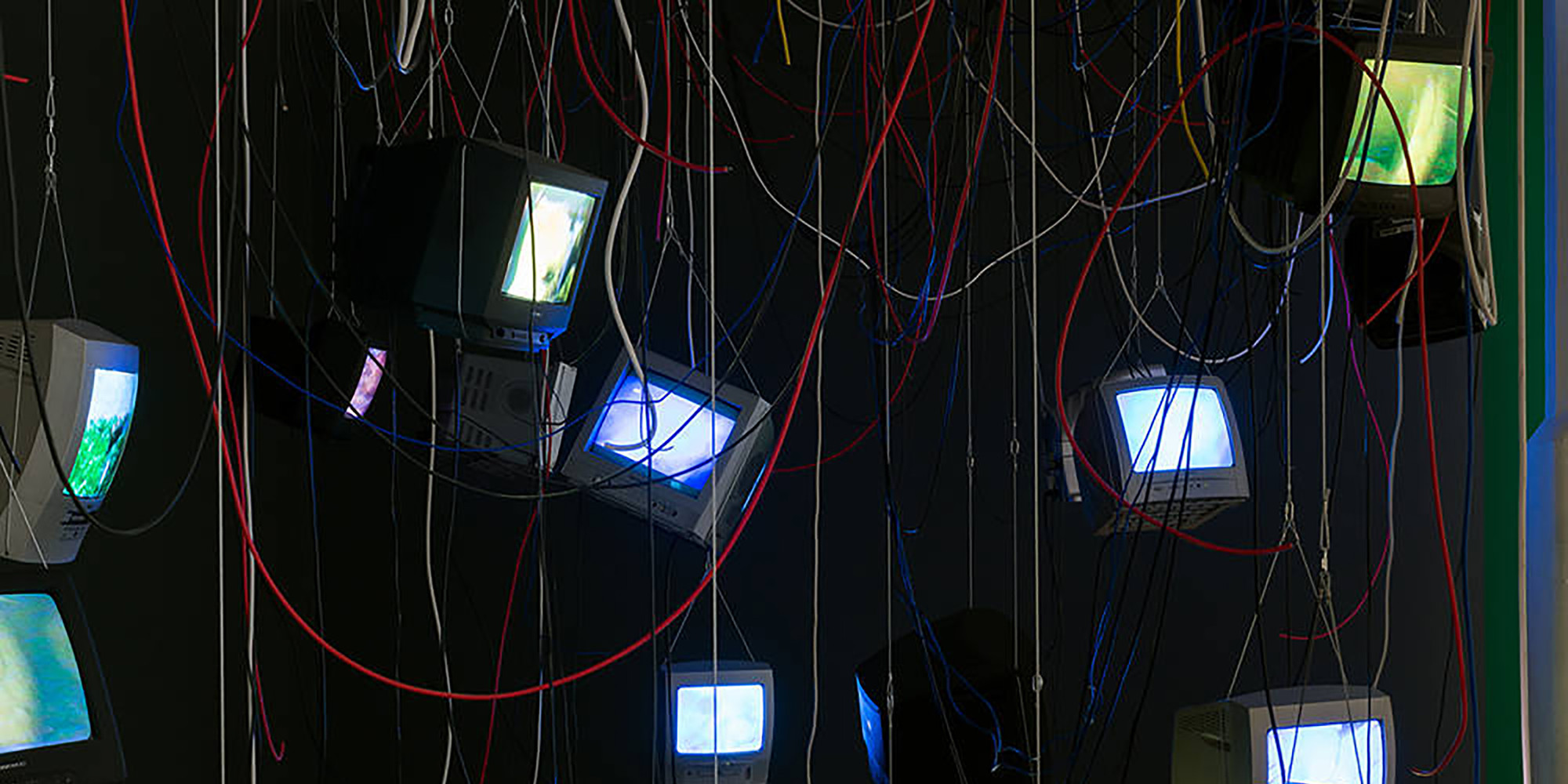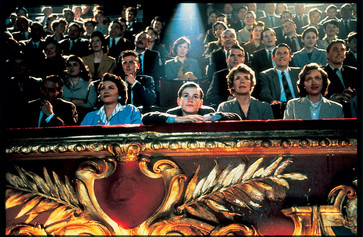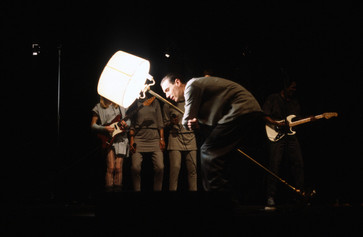
Films We Discovered During Quarantine
Members of our Department of Film share some notable new films and unexpected finds.
Jul 14, 2020
Cinemas may be closed, and big new releases postponed, but there are plenty of new things to discover on streaming platforms. Members of MoMA’s Film Department gathered a list of films they watched while working from home that were new to them—including premieres, obscure discoveries, and under-seen classics. Films are available to stream where indicated.
Dave Kehr, Curator
The Post Telegrapher and The Lieutenant’s Last Fight. 1912. USA. Directed by Francis Ford
YouTube
Overshadowed during his lifetime by his immensely gifted younger brother, John Ford, and after his death by a certain New Hollywood director who now dominates all Google searches of his name, Francis Ford remains an underappreciated figure in the early history of American film. Though the vast majority of his 179 films as a director have been lost, our colleagues at the Eye Film Museum in Amsterdam have restored and put online three of Ford’s pioneering works. The Post Telegrapher and The Lieutenant's Last Fight are both two-reel Westerns from 1912, made for the producer Thomas Ince at his Santa Monica studios. With their dramatic use of landscape, emphasis on the communal life of the frontier, and quietly self-sacrificing protagonists, they seem to be laying the foundations for such later John Ford masterpieces as Fort Apache and She Wore a Yellow Ribbon.
The Craving. 1918. USA. Directed by Francis Ford
YouTube
The Craving, a full five-reel feature made for Universal in 1918, is quite different: a dark melodrama that explores the Ford family curse—alcoholism—through the story of a chemist (played by Ford) whose work on a powerful new explosive is compromised by his weakness for drink. Using double and triple exposures, Ford portrays his character’s dilemma through bold special effects, including an extended sequence in which the scientist is beset by tiny dancing girls who emerge from a bottle of whisky.
Rajendra Roy, Chief Curator of Film
Da 5 Bloods. 2020. USA. Directed by Spike Lee
Netflix
Spike Lee has never flinched from depicting the sinister, systemic violence perpetrated on Black bodies in the US. In his latest epic, Da 5 Bloods, Lee makes clear the transitive nature of that violence—the American government exports its racism. Specifically, in this film, to Vietnam and the war fought there (though Lee points out that this is true of all global wars where Americans have been sent abroad). Following four former soldiers (Isiah Whitlock Jr., Norm Lewis, Clarke Peters, and an astonishing Delroy Lindo) who return to Saigon in search of shallow-buried treasure in the form of a fallen leader (Chadwick Boseman) and a chest of gold bars—both of which may bring more pain once they are unearthed. The film is loose, exuberant, and emotionally shattering. Spike Lee has once again delivered a film that pierces straight to the heart of our time.
Carson Parish, Theater Manager
Detour. 1945. USA. Directed by Edgar G. Ulmer
Criterion Channel
Up from the depths of the “Poverty Row” Producers Releasing Corporation spouts Edgar G. Ullmer’s Detour, a moody film noir starring Tom Neal as piano player Al Roberts and the positively electric Ann Savage as a hitchhiker named Vera. Al is thumbing a ride West when a bookie picks him up, only to die late at night in the Arizona desert. After copping the bookie’s identity, Al thinks he’s in the clear—until Vera shows up, wise to Al’s game and his lucrative plans. The two need each other, but their currents couldn’t be more opposed. With taut editing, a swingin’ soundtrack, and performances that match the best of Hollywood film noir, Detour is as good as it gets.
Sweetie. 1989. Australia. Directed by Jane Campion
Criterion Channel
Before Jane Campion became internationally renowned for An Angel at My Table and Oscar-winner The Piano, she made a film that still eludes all the multitudes of her decades-long career. Sweetie, the titular, gregarious ne’er do well, moves in with her unwitting sister and boyfriend only to wreak havoc upon the family and its repressive sociological roles. Campion’s debut feature is by turns hysterical, riotous, tender, crude and, most notably, heartfelt.
Fourteen. 2019. USA. Directed by Dan Sallitt
Dan Sallitt’s complex character study is a window into the dissolution of a seemingly sturdy friendship between two city-dwellers. The performances by Tallie Medel and Norma Kuhling paint these characters in full color, while the film’s principled construction reflects a masterful calculation of its emotional weight. To quote Annie Dillard, “No need for microcosms or macrocosms.... Everything and everyone represents itself alone.”
Sean Egan, Senior Producer, Film Exhibitions and Projects
Salem’s Lot. 1979. USA. Directed by Tobe Hooper
Tobe Hooper was never quite able to navigate the Hollywood that beckoned him after the breakthrough success of The Texas Chainsaw Massacre, but while his output is spotty, his talent remains undeniable. Taking on one of Stephen King’s most Stephen King-esque novels (small town Maine! creepy locals! creepier new visitors!), his 1979 version of Salem’s Lot is legitimately scary and perfect quarantine viewing. Come for James Mason, nibbling the scenery as Richard Straker, the mortal minion ever in service to the evil vampire Kurt Barlow, and stay for Hooper’s influential effects work and deft pacing, all culminating in a truly memorable finale.
Prince of Darkness. 1987. Directed by John Carpenter
“I’ve got a message for you, and you’re not going to like it.”
What can bring together a priest, a physics professor, a gaggle of graduate students, and Alice Cooper? The Anti-God, of course. The second film in John Carpenter’s "Apocalypse Trilogy" (preceded by The Thing and followed by In the Mouth of Madness), Prince of Darkness presents a group of near-strangers thrown together and under siege from an otherworldly force, a Carpenter staple. This time, the group of believers and skeptics are investigating a mysterious container of sentient green ooze that just might be the embodiment of Satan. After two back-to-back bouts with Hollywood studios on Starman and Big Trouble in Little China, Carpenter returned to his indie roots and the bleak outlook on humanity that permeates much of his work. The limited budget was not spent on the cast, composed of mostly unknown actors—apart from Carpenter regulars Donald Pleasance and Victor Wong—but on the eye-catching production design and practical effects work. Carpenter uses his freedom from studio oversight to wade into science, pseudo-science, and religion while maintaining his genre bona fides by delivering murderous rock stars when the mood calls for it.
Olivia Priedite, Department Assistant
Premature. 2019. USA. Directed by Rashad Ernesto Green
Hulu
While the title most literally implies a potential pregnancy, Premature is a more apt adjective for Ayanna, a 17-year-old poet rounding out her summer in Harlem before heading to college. Ayanna is wise beyond her years, the most mature of her lively group of friends, and growing weary of the boys from the neighborhood. Ayanna soon finds a rare, intense connection with a slightly older music producer, Isaiah, that transforms her plans for the future. Rashad Ernesto Green’s second feature film is a unique achievement, capturing the lyrical, and tortured, nature of finding an unexpected connection at an unexpected time. Shot entirely on 16mm, Laura Valladao’s photography is both stunning and understated, evoking the enveloping feeling of a New York City summer.
The Vast of Night. 2020. USA. Directed by Andrew Patterson
Amazon Prime
After being turned down by 18 film festivals, Andrew Patterson’s debut feature finally premiered at the Slamdance Film Festival in January 2019. Perseverance paid off, as the film is now streaming on Amazon Prime following screenings at the Toronto Film Festival and Hamptons Film Festival, among others. The Vast of Night is a contemporary sibling to The Twilight Zone, using a small southwestern town as the backdrop for a mysterious incident that has disrupted the local radio waves. With impressive production design, sound mixing, and nimble camerawork, Patterson follows a jaded local radio DJ and a precocious switchboard operator as they investigate what might have interrupted the broadcast. The film reaches further than its plot, to investigate not only the unknown forces plaguing Cayuga, New Mexico, but how we perpetuate our own ignorances.
Marta Zeamanuel, Department Assistant
The Hottest August. 2019. USA. Directed by Brett Story
PBS
I miss the citizens, sights, and sounds of New York City. Whether hearing longtime Brooklynites lamenting the lack of community on their changing block as they lounge on the sidewalk on a quiet summer evening, or watching the silhouettes of Cyclone riders descending from the heights of a rollercoaster against an absurdly bright Coney Island sky, this documentary reminded me how everyday life here is filled with personal and spectacular moments. Though an eerie soundtrack and intermittent narration occasionally pull us away from their company, New Yorkers are the stars here, engaged in activities and interviews that reveal an array of personalities, attitudes, concerns, and hopes.
High Maintenance. 2016–present. USA. Created by Katja Blichfeld and Ben Sinclair
HBO
Perhaps no other show depicts New York’s inhabitants with as much intimacy, finely detailed humor, and grace as High Maintenance. Unbound to plot lines, the anthology series makes the most of its format, providing endless points of entry as the show’s protagonist, a bike-riding weed dealer, brings us into the neighborhoods, homes, and lives of his clients. Though one can easily indulge in each of its four seasons, the current one offers a knockout episode titled “Trick”: When an intimacy coordinator working on film and TV sets and an asexual actor fall for each other, the show crystallizes the excruciating, exhilarating dance between alienation and connection that all New Yorkers are sure to recognize.
Stations of the Elevated. 1981. USA. Directed by Manfred Kirchheimer
Tubi
Weaving in and out of above-ground New York City train stations, the Lexington Avenue Express is vividly captured during a late-1970s summer amid lush breeze-kissed trees, lurid billboards of scantily clad women and cowboys, and the birth of hip-hop culture. This 45-minute time capsule canonizes Bronx and Brooklyn youth who—surrounded by stories-high advertisements repeatedly featuring gargantuan blonde, blue-eyed bodies—find artistic expression and appreciation in graffiti-adorned subway cars that serve as galleries of their impassioned work.
Anna Morra, Associate Curator
The DaVinci Code. 2006. USA. Directed by Ron Howard
Vudu
I’ve been reading Walter Isaacson’s epic biography of Leonardo Da Vinci, and was intrigued by the mathematical genius and the symbology of his circa 1490 drawing Vitruvian Man. I realized I had never watched The Da Vinci Code, which begins with the death of a Louvre curator discovered in the manner of the Vitruvian Man.
The film weaves together the intricate ciphers and visual codes found in a multitude of Da Vinci's works, such as the Mona Lisa (1503) and The Last Supper (1495–98), which are pored over by Harvard professor Robert Langdon. Langdon is in Paris to present a paper on symbology, and gets drawn into the police investigation of the curator’s murder. Along the way he is menaced by members of the Opus Dei, is chased through Paris, and searches for the Holy Grail. This thrilling film’s conclusion, at the Pyramide du Louvre, may be contrary to the teachings of the Catholic Church.
Brittany Shaw, Curatorial Assistant
Shakedown. 2018. USA. Directed by Leilah Weinraub
Criterion Channel
Nellie Killian’s beautifully curated series Tell Me: Women Filmmakers, Women’s Stories honors the art of listening. Included among the two dozen titles is Leilah Weinraub’s Shakedown (2018), which intimately documents an early 2000s underground Black lesbian strip club in LA—until its eventual forced closure by the LAPD. With Weinraub herself behind the camera (for six years!) the audience has the privileged position of feeling the excitement and anticipation of being in the front row feeling the joys of lesbian nightlife and community, and watching the dollar bills fly for the sexy, hardworking Shakedown Angels.
Clothesline. 1981. USA. Directed by Roberta Cantow
Criterion Channel
While you’re there, listen to the women of Roberta Cantow’s Clothesline (1981) discuss the domestic labor and social history of laundry, and the exhaustion, anger, and small joys that go along with it. While the oral histories relay the concerns and frustrations of these women, the 16mm visuals, filmed mostly around New York City, are an ode to the aesthetic beauty and artistry of this “women’s work.”
Sophie Cavoulacos, Assistant Curator
The Green Ray. 1986. France. Directed by Eric Rohmer
Criterion Channel
By no means obscure, but still new to me, is Rohmer’s mid-’80s encapsulation of the summer blues. And what an apt summer to watch it. In fits and starts, a lonely Parisian woman (Marie Rivière, who cowrote the screenplay) keeps trying to get out of town but can’t shake her unease until quiet self-actualization appears amid all the languid turns. A grandfatherly type says early on, about Paris, “There is no sea, but we have the Seine. It’s just as good.” Let us channel that from the Hudson River to the Gowanus Canal.
Everyday People. 1979–90. USA. Directed by JoAnn Elam
YouTube
Chicago independent filmmaker JoAnn Elam worked as a mail carrier for over a decade, and chronicled the collective experience in a never-released film now available through the Chicago Film Archives. A constellation of narrators reveals experiences with sexism and racism but also lifelong friendships, pride in a public service that keeps Americans connected, and run-ins with sentinel doggos. Lots to think about while waiting for the mail (as we express continued gratitude to New York’s essential workers).
An Oversimplification of Her Beauty. 2012. USA. Directed by Terence Nance
Amazon Prime
Not actually a first-time viewing, but when I tuned in to photographer Tyler Mitchell’s daylong Night at the Cinema in mid-May, I rewatched An Oversimplification of Her Beauty somewhat on a whim. I recalled its New Directors/New Films premiere in 2012, months before I joined MoMA, seeing it that summer at Lincoln Center, and the experience of ducking into a half-empty movie theater for an air-conditioned afternoon. From my Brooklyn living room, I found myself tapping into the communal quality of the artist-curated live gathering, even in a virtual format. Tyler’s marathon program was organized around the theme of Sanctuaries and centered on Black film artists ranging from Gordon Parks to Jacolby Satterwhite, and further ND/NF alums RaMell Ross and Khalik Allah. Seeing an image of Breonna Taylor on Mitchell’s desktop as he and Nance spoke was a poignant reminder of how sanctuary and justice remain denied to so many through the forces of white supremacy. Oversimplification —a maximalist study of interiority, art-making, keeping at it in New York City, and Black love—opened up new avenues for both reflection and connection.
Related articles
-

Resources
The Greatest Films You’ve Never Seen
MoMA’s Department of Film created a comprehensive streaming list to indulge any cinephile’s needs.
Apr 24, 2020
-

What to Watch When You’re Stuck at Home
Members of MoMA’s Department of Film and the Creative Team have you covered with these streaming suggestions.
MoMA
Mar 18, 2020

